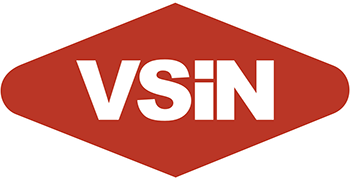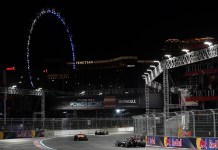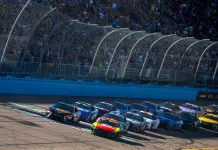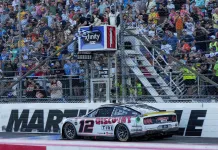Daytona 500 and NASCAR Season Preview
Editor’s Note: Because rain is in the forecast for later in the day, NASCAR officials moved the Daytona 500 up an hour, to 1:30 p.m. ET (Fox).
The wrap-up of the Super Bowl and the conclusion of another NFL season are always bittersweet times for sports bettors, particularly for those who don’t enjoy or have the time for the daily routine of handicapping basketball, baseball, or hockey. If you’re one of those people and looking for “what’s next,” perhaps NASCAR betting is the perfect fit for you. It offers huge weekly events with all kinds of wagering possibilities to consider, including futures, win props, driver vs. driver matchups and much, much more for every race. Well, if you’re into the idea, the 2025 NASCAR Cup Series season starts Sunday, and unlike most sports, the biggest event of the season is the first, the Daytona 500. I’m here to preview not only the first race, but the season as well, and I offer up some of my favorite wagers available.
We all just watched the 59th edition of the NFL’s Super Bowl on Sunday. NASCAR runs its own “Super Bowl of Stock Car Racing” this week. It’s always a wild ride at Daytona International Speedway, as Daytona 500 action is unmatched on the circuit for crazy finishes, intensity, and wild wrecks. This makes it rather tough to predict for bettors, especially those who rely on stats and historical data like me, but it is always a fantastic opportunity to score with big underdogs.
It’s also a thrilling way to fire up the NASCAR betting season, which runs all the way through November. Once again, I will offer up my “famous” race simulations on VSiN for every one of the circuit’s 36-point stops. In them, I project the finishing order for all the entered drivers, as well as their average finish in my simulation runs. Bettors can use these projections to attack every wagering option offered by most books. For this particular Daytona 500 race preview, I will compare my early projections to the offering at DraftKings.
2024 Season Wrap-Up
If you don’t immediately recall the 2024 NASCAR season, Joey Logano won his third series title in the championship race at Phoenix in November, holding off teammate Ryan Blaney late. Those two are the last three championship holders, as Team Penske is on a three-year winning streak. Logano won four times in 2024, second only to Kyle Larson’s six. In all, 18 drivers won races, a lofty figure. Larson and Christopher Bell shared the Top 5 honors, each securing 15 such finishes, while the consistent Bell paced the field with 23 Top 10s. William Byron, the preseason odds-on title favorite prior to the season, also enjoyed a nice campaign but fell short of a title run at Phoenix, finishing 3rd in the standings. Tyler Reddick was the last of the “final four” championship contenders after a strong season as well.
In this same piece a year ago, I raved about the results of my simulations from the last half of the 2022 season and the full 2023 season. In fact, on outright winners alone, I was extremely profitable. That pattern continued in the first half of the 2024 campaign as well, as I was able to peg five different winners in the first 21 races for strong profits once again. However, I seemed to hit a wall at that point and will actually be going into this season on a 15-race “winless streak.” I still did reasonably well with my own wagering on matchups and such, but I wasn’t able to peg an outright winner with an initial or final simulation run. Hopefully, we can end that streak on Sunday and get this year off to a great start!
All of that said, it is important for me to remind readers that there are certain tracks and races throughout the season where I feel more comfortable projecting races by statistical methods. You can easily spot these by the Track Handicap-ability Grade I assign in each week’s simulation. The grades range from most predictable at Richmond and Dover, with grades of A- to F at Daytona. Yes, you read that correctly. For as much as the Daytona races are captivating, they are also a crapshoot for bettors. Consequently, betting winners are usually rewarded more handsomely with underdog prices.
2025 Season Championship Odds
According to DraftKings, Kyle Larson (of Hendrick Motorsports) and Christopher Bell (of Joe Gibbs Racing) go into the 2025 season as the co-favorites for the Cup Championship. Both are positioned at +550 for the upcoming campaign. Interestingly, those are the exact same odds Larson had at this point a year ago, a tic behind teammate William Byron at +500. Bell was not one of the top four picks last year, but he has elevated himself to elite status after last year’s big season. Byron checks in at #3 on the odds list for ’25 at +600, while Ryan Blaney rounds out the top four at +650. The fact that two of those top four have never won a title needs to be given some consideration, as does the fact that the Championship Race is held at Phoenix, a track in which the Penske team seems to have a real good handle on lately.
With that in mind, I would make a case for Blaney, and perhaps Logano again, being my personal favorites. Of course, if you’re going to make a season title type of wager this season, I would never go beyond four or five drivers deep. I typically don’t like laying out futures wagers on NASCAR this early in the season, as nine months is a long time to hold money on a wager if you ask me. Plus, I prefer to wait until the playoffs start to see how each contender’s season has played out. Believe me, you won’t lose a lot on the prices between now and then. In any case, here are my own personal “championship tiers” on the top contenders, with their DraftKings odds listed alongside:
Tier 1:
Larson (+550)
Blaney (+650)
Tier 2:
Bell (+550)
Logano (+850)
Tier 3:
Chase Elliott (+1100)
William Byron (+600)
I personally wouldn’t go any further than that, but if I were to make any “longshot” predictions on title-worthy drivers, I might include Chase Briscoe (+1800) and Ty Gibbs (+2200).
Makinen’s Race Simulations for all 36 Season Races
You will find my initial simulation for the race as it stood on Monday, 2/10. This will change based on the qualifying, duels, and practice results happening through Saturday morning. After that all concludes, a final simulation will be available on the VSiN.com website and newsletter sometime Saturday afternoon or later. In general, the weekly format will follow this Tuesday/Saturday schedule for all 36 races.
I shared earlier some of the winning race projection stats, but using the simulations for picking outright winners is just one way to take advantage. I utilize them just as much for finding value in Top 3 and Top 5 finishes, as well as over/under finishing positions, driver vs. driver matchups, and Daily Fantasy options. Of course, the options available to wager vary greatly by book, but the simulations somewhat address all of it.
Season Driver/Team Changes
While several teams will be changing crew chiefs, the more recognizable changes for this season come in the area of drivers switching teams. The biggest story of the year in the garage was the decision of Stewart-Haas Racing to close its doors. The equipment, teams, charter points, and car numbers were absorbed by some other organizations. In terms of individual drivers, Martin Truex is the biggest name missing, as he retired from full-time racing after last season and is being replaced in the #19 Joe Gibbs Racing Toyota by Chase Briscoe, who was formerly with SHR. One of his former teammates who was left without a ride also found a new home, as Josh Berry takes over the #21 Wood Brothers Ford for Harrison Burton.
Third-car teams were added at Team 23XI and Trackhouse Racing. Those are two of the biggest emerging teams in NASCAR and are getting more competitive each consecutive season. Third cars should only help to accelerate that progress. The 23XI car will be #35 and driver by Riley Herbst, while the Trackhouse full-time entry will be #88 and piloted by Shane Van Gisbergen, who has already developed a reputation as one of the series’ best road course racers. Those are the biggest moves among drivers/teams that hope to compete for playoff spots, but there are some other changes NASCAR enthusiasts will recognize.
The schedule for the 2025 season has also undergone a significant shakeup, with a few new playoff locations being the highlight. There will also be another road course race added, this time with the series set to visit Mexico City in mid-June. Road racing is becoming a bigger part of the NASCAR schedule seemingly every year, and fortunately, that type of racing has become perhaps my favorite in terms of simulating, as the historical data, practice and qualifying speeds have proven quite valuable for astute handicappers.
Daytona 500 Odds and Key Stats
Referred to as “The Great American Race,” the Daytona 500 boasts NASCAR’s biggest prize purse as well as the coveted Harley J Earl Trophy. Plus, the first playoff ticket gets punched for the winner. Daytona International Speedway becomes the center of the racing world again by offering an unparalleled brand of racing. The track is one of the NASCAR circuit’s biggest at 2-1/2 miles around, and with speeds reaching 200+ MPH on up to 31-degree track banking, it’s easy to see how the action becomes so exhilarating. There is little that compares to the freight train-like roar of the closely drafting cars flying around the oval.
As bettors, there is no track nor race in which it is more favorable to bet underdogs, as evidenced by the winners of the last four races, William Byron last year, Ricky Stenhouse in 2023, rookie Austin Cindric in 2022, and Michael McDowell in 2021. All four went off at higher than +2200 to win those events. Incidentally, each is +2000 or longer this year. Keep that in mind as you search for potential big-money plays. In this same space last year, I called for Byron as one of my top three longshots.
Fundamentally, in terms of handicapping, Daytona is the only track that I assign a Handicap-Ability Grade of F to for my simulations, and not only for the surprise winners that come from out of nowhere here, but also because huge accidents, or “big ones” as they are referred to, can wipe out as many as 10 -15 cars at a time, many of whom are expected contenders. In fact, last year’s race again featured sizeable accidents, and in the end, only half of the race’s 40 entrants finished on the lead lap. Three of them lasted only five laps, and a total of 10 were eliminated because of crash damage.
In terms of statistics at any track, as a race bettor, I easily prefer recency numbers compared to longevity figures, and I shape the formulas that go into my simulations accordingly. Looking back at career numbers at the Daytona 500, Denny Hamlin (+1100) is the man to beat. He won the 2019 and 2020 500s here. Overall, Hamlin boasts three wins at this track in his career, as well as eight other Top 5s in 38 tries. His average finish is a modest 17.6 though, not a great number at all. In fact, Bubba Wallace (+2500), Alex Bowman (+2500), Austin Cindric (+2500), and Austin Dillon (+4500) show better average finish numbers among drivers that have run more than five Daytona races, with Wallace topping the list at 11.9.
As I indicated, however, I prefer looking more closely at what drivers have accomplished lately at each track. In fact, I typically don’t go back much more than three years in my mental handicapping. These recent performances are what goes into figuring my race simulations. Along those lines, Joey Logano (+1200) tops my handicapped track rating, followed by Kyle Busch (+1100), and Chris Beuscher (+2200). In terms of the track designation ratings, which include other similar tracks, in this case Talladega, Austin Cindric (+2500) sets the pace, followed by Busch and Bubba Wallace (+2500).
Besides qualifying and practice speeds, the only other major statistical category that goes into projecting my race finishes is momentum, and there, Kyle Larson (+1000), the official race favorite, is ahead of the field, followed by William Byron (+2000), and Christopher Bell (+2200). Incidentally, the last eight Daytona races, including those run in summer, have found eight different winners. That list does not include some of the series’ biggest names like Larson, Hamlin, Elliott, Logano, and Busch, so you can rest assured that there will be no shortage of hunger from anyone in the field on Sunday. That hunger could keep them among the contenders on Sunday, assuming they can avoid trouble. That is, of course, the big question mark for every car in the field.
Qualifying for the Daytona 500 takes on a different look than all other races, as only the top two cars in terms of qualifying lap speed earn their positions on the front row. The rest of the field is set by two 50-lap shootout events held on Thursday. This year’s front row will be decided on Wednesday evening. However, I caution you not to overreact to the starting positions, as they have little or nothing to do with how drivers finish. In fact, only one of the last 16 pole starters at DIS has finished better than 14th, and that was Alex Bowman, who finished fifth in this race in 2023. The last pole winner to win a race was Dale Earnhardt, Jr. all the way back in July 2015.
Typically, I love to watch the duel races on Thursday night, not only because they help set the field but because it gives bettors a good idea of which drivers have a good feel for the draft. That said, having to make my predictions at this point (which will assuredly change after the duels and practice sessions), I would go with the following:
Daytona 500 Top 5: Logano (+1200), Cindric (+2500), Elliott (-1200), Beuscher (+2200), Keselowski (+1400)
Top longshots (+2500 or higher): Cindric (+2500), Wallace (+2500), Stenhouse (+3000), Chase Briscoe (+3000), Ty Gibbs (+3000)
Favorites to struggle: Kyle Larson, Christopher Bell, William Byron
The Daytona 500 at the World’s Epicenter of Racing is set for 2:30 PM ET on the 16th.
Be sure to visit VSiN.com and browse to AUTO RACING under the sports tab, then click on the NASCAR HUB link for this week’s full INITIAL SIMULATION. This is where you’ll find the sims all season long.






